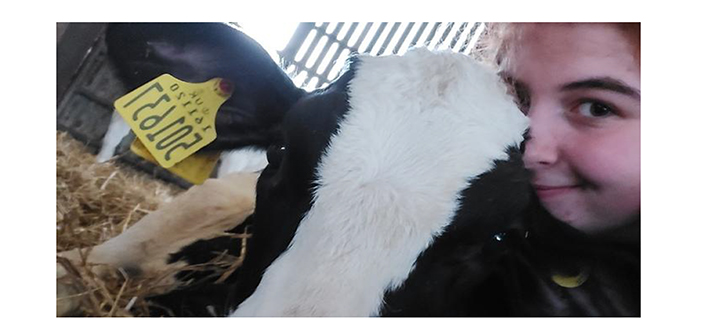Both farmers and vets believe health and welfare of cows – and their productivity – can be by the use of physiotherapy, research by a Harper Adams student has suggested.
Natalie Stanley, who studied BSc (Hons) Veterinary Physiotherapy, spoke to both farmers and vets as part of her final year Honours Research Project to discover their views. Each received a tailored questionnaire which sought to ascertain their opinions – and what had led them to hold these views.
Ms Stanley, who discovered her love for working with cattle during her time at Harper Adams and her work on the university’s farm, has since spoken about her work to researchers at another institution, sharing her findings and discussing other ways in which physiotherapy can be used to boost cattle health and productivity.
Among the benefits that large animal vets cited for physiotherapy, was its role in helping to tackle infectious diseases of the hoof among dairy cattle – helping to reduce severe and chronic lameness and thus increasing their milk yield.
She explained: “Often only score three lameness is treated, as lower grade lameness is not easily detected. However, vets felt that a veterinary physiotherapist trained in lameness detection might provide faster and more accurate lameness treatment – and stop the productivity, health, and welfare of the cattle being compromised.”
Beef cattle were considered the least treatable group by large animal vets, due to their size. However, they felt dairy cattle could be helped with a variety of conditions, including downer cow and compartment syndrome, post-calving injury, nerve injuries, bulling injuries and more.
It was also suggested that veterinary physiotherapy was useful for calves with contracted tendons, fractures and even pneumonia.
Meanwhile, farmers’ responses to the questionnaire suggested they believed veterinary physiotherapy could improve herd welfare, meat quality, cow longevity, energy intake and even milk yield.
Ms Stanley added: “Farmers also considered physiotherapy as treatment for calves, nerve injuries and splits. However, the most positive outcome was the 79% interest from farmers in learning more about how veterinary physiotherapy can be beneficial in the cattle industry.
“Farmers felt that the main barrier to the use of physiotherapy was a lack of knowledge in the area and that there was a need for teaching and information on where it could be helpful for cattle.”


